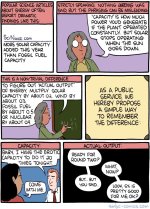bilby
Fair dinkum thinkum
- Joined
- Mar 6, 2007
- Messages
- 40,286
- Gender
- He/Him
- Basic Beliefs
- Strong Atheist
Renewable Energy Prices Hit Record Lows: How Can Utilities Benefit From Unstoppable Solar And Wind?
notingOver the last decade, wind energy prices have fallen 70% and solar photovoltaics have fallen 89% on average, according to Lazard's 2019 report. Utility-scale renewable energy prices are now significantly below those for coal and gas generation, and they're less than half the cost of nuclear. The latest numbers again confirm that building new clean energy generation is cheaper than running existing coal plants.
Lazard's Levelized Cost of Energy Analysis - cost in US: $/MWh
It's good to see wind and solar beating fossil fuels. Now what we need is good batteries and other such storage.
- 151 - 242 - Solar PV - Rooftop Residential
- 75 - 154 - Solar PV - Rooftop C&I
- 64 - 148 - Solar PV - Community
- 36 - 44 - Solar PV - Crystalline Utility Scale
- 32 - 42 - Solar PV - Thin Film Utility Scale
- 126 - 156 - Solar Thermal Tower with Storage
- 69 - 112 - Geothermal
- 28 - 54 - Wind
- 150 - 199 - Gas Peaking
- 118 - 192 - Nuclear
- 66 - 152 - Coal
- 44 - 68 - Gas Combined Cycle
Without the storage, wind and solar beat nothing. They make more electricity than you can use; Or less than you need. Usually the latter.
Hand waving is not a substitute for storage. Nor is hope. That's why wind and solar have huge "installed capacity", but still produce three eighths of bugger all percent of electricity worldwide, and an even lower percentage of world energy.
Installed capacity is so misleading that it's practically an outright lie. Install 1GW of nuclear, and you get 900+MW. Install 1GW of solar, and you are lucky to get 250MW, even in the tropics. And you get it when the sun shines, not when you have a need for it. So some of it is likely a waste - unless solar is a tiny fraction of your total generating capacity.
Stop the spin. Stop the lies. Tell us what proportion of energy demand is being generated by these things, not what the "installed capacity" is. That metric is purely useful for propaganda purposes.


